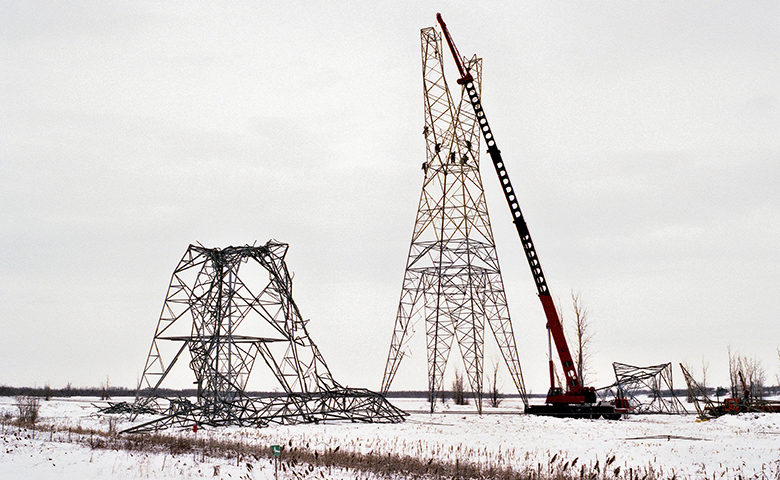Cranes are a common sight at various construction sites and harbors. Although they vary in size and load capacity, they all have to be operated with care and caution to protect workers and the public. And before any work can take place, it’s important to ensure proper ground and environmental conditions.
Power lines
In the planning stages, and before any work can begin, those in charge need to request that utility owners and/or operators provide them with voltage information of power lines in the vicinity. They must also consult with utility companies before performing work in close proximity to power lines.
When identifying the work zone (either marking the boundaries or allowing the work zone to be a 360-degree area around the equipment), it needs to be determined if any part of the equipment, load line or load (if operated up to the equipment’s maximum working radius) could get closer than 20 feet to a power line of less than 350 KV. If so, the company has three electrical compliance options:
- Deenergize and ground the powerlines in question.
- Ensure a 20-foot clearance.
- Ask the utility company for the line voltage in order to figure out the minimum clearance distance.
If the first option is not possible, those in charge of crane setup and operation will need to design encroachment prevention measures by using the following steps:
- Conduct a planning meeting with the operator and other workers who will be in the area to agree on the steps needed to prevent electrocution.
- If tag lines are going to be used, they must be non-conductive.
- Erect and maintain elevated warning lines, barricades, or line of signs for the crane operator to clearly see. These need to be set up 20 feet from the power line or at the minimum distance allowed.
- If the operator is unable to see the elevated warning line, a dedicated spotter must be used.
- In addition to the encroachment prevention precautions, a proximity alarm, a warning device, a range limiter, a dedicated spotter or an insulating link should also be used.
If it’s impossible to work in a zone permitted by regulations, the company must show that it’s infeasible to perform work without breaching the minimum approach distance and then deenergize and ground or relocate the power line. If that’s the case then the power line owner (or a registered professional engineer) will set a minimum approach distance.
In addition, a planning meeting between the employer and the power line owner (or registered professional engineer who is a qualified person with respect to electrical power transmission and distribution) will have to determine procedures required to prevent electrocution. These could include:
- elevated warning line or barricade;
- barricades 10 feet from equipment;
- range limiter;
- insulating link;
- nonconductive rigging and tag line;
- limiting access to essential workers;
- grounding the equipment;
- deactivating automatic re-energizer; and
- installing an insulating line cover-up.
Ground conditions
Given the size and weight of the majority of cranes, it’s vital to monitor ground conditions on the worksite. The controlling entity (usually the contractor or employer) is responsible for ensuring that the conditions are sufficient for crane assembly.
The ground needs to be firm, drained and graded, and able to support the crane (in conjunction with blocking, mats, etc.). In addition, the controlling entity must inform the crane operator of known underground hazards such as utilities, and provide them with all other information known about ground conditions.
Weather
The importance of weather when performing crane assembly and operations cannot be overstated. Various weather conditions can affect ground stability, visibility, workers’ performance and grip and, in extreme circumstances, even lead to a crane overturning.
This is why it’s so important to include weather in the employer’s work plans. Additionally, weather should also be one of the topics discussed at each safety meeting. Although people working with cranes are regularly exposed to the elements and working in the rain or scorching heat is nothing new, sometimes it might be wise to consider if certain conditions are worth the risk.
Due to the nature of their job, cranes need to be assembled and disassembled at various different locations and environments. This is why considering all the conditions that could have an impact on the crane’s performance and safety need to be considered. Ground conditions, electrical safety and the weather are the usual suspects, but it’s worth considering anything and everything that could affect the stability and performance of the crane and the performance of the crew, including human factors and work processes that may inadvertently increase the risk of a crane-related incident.

